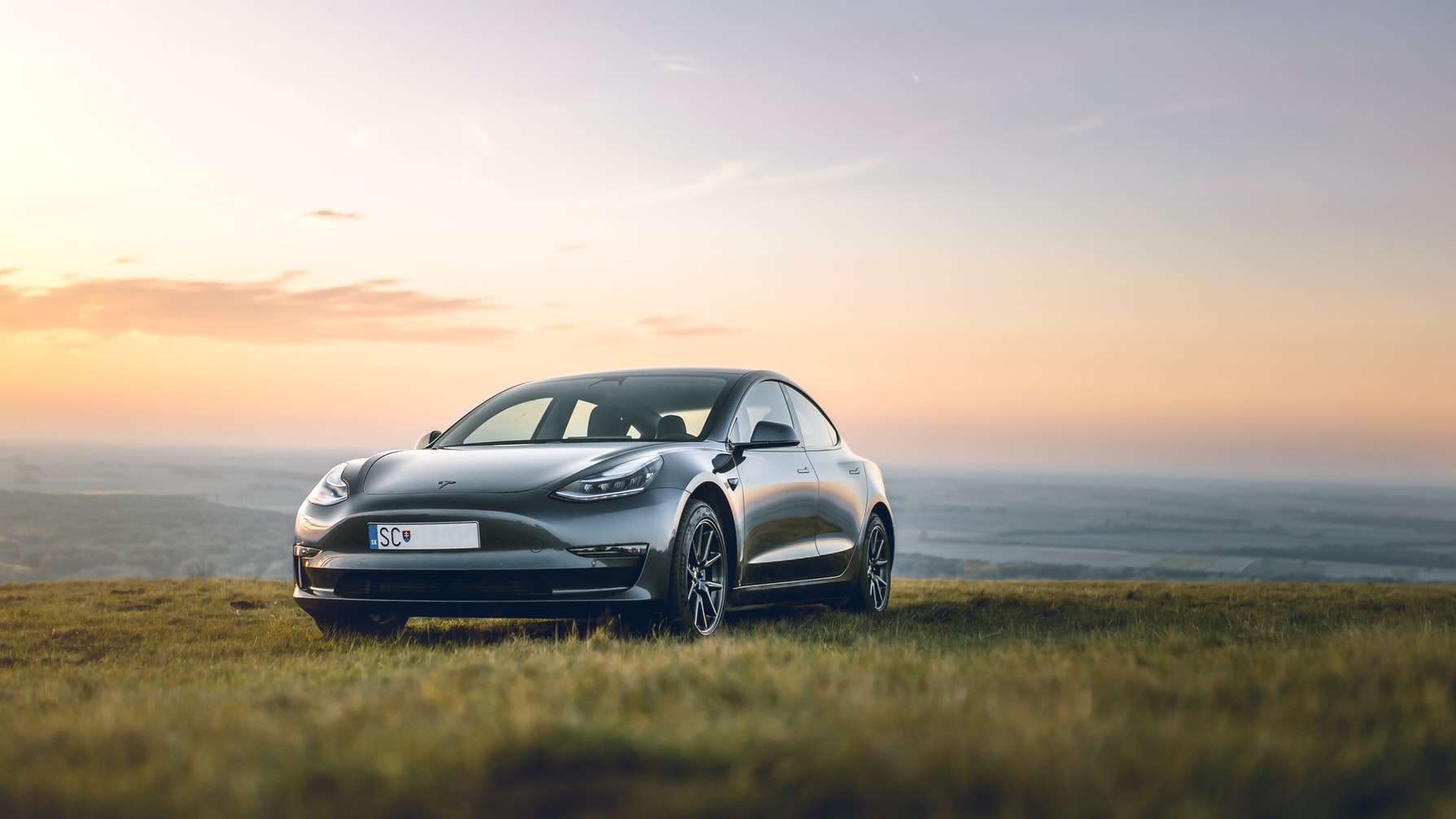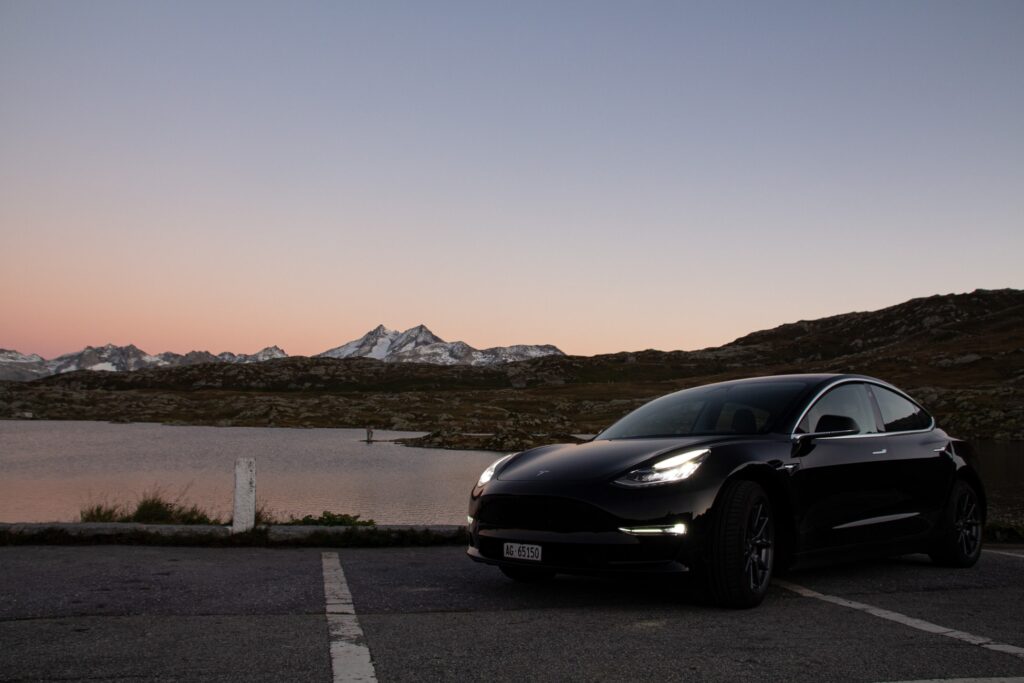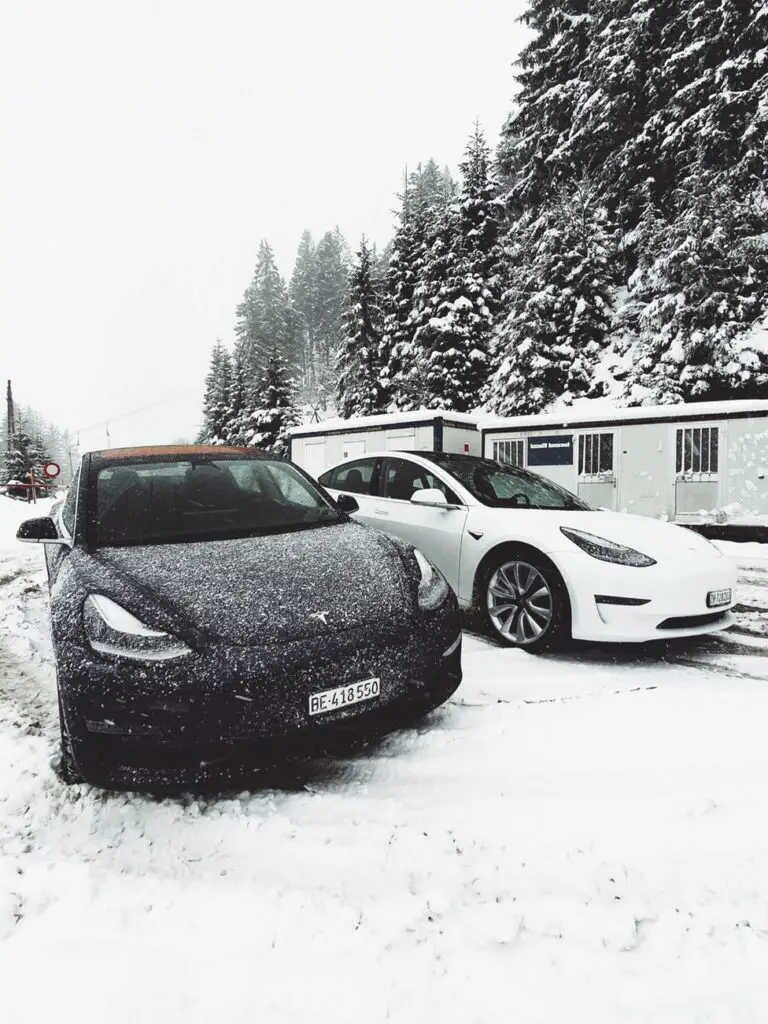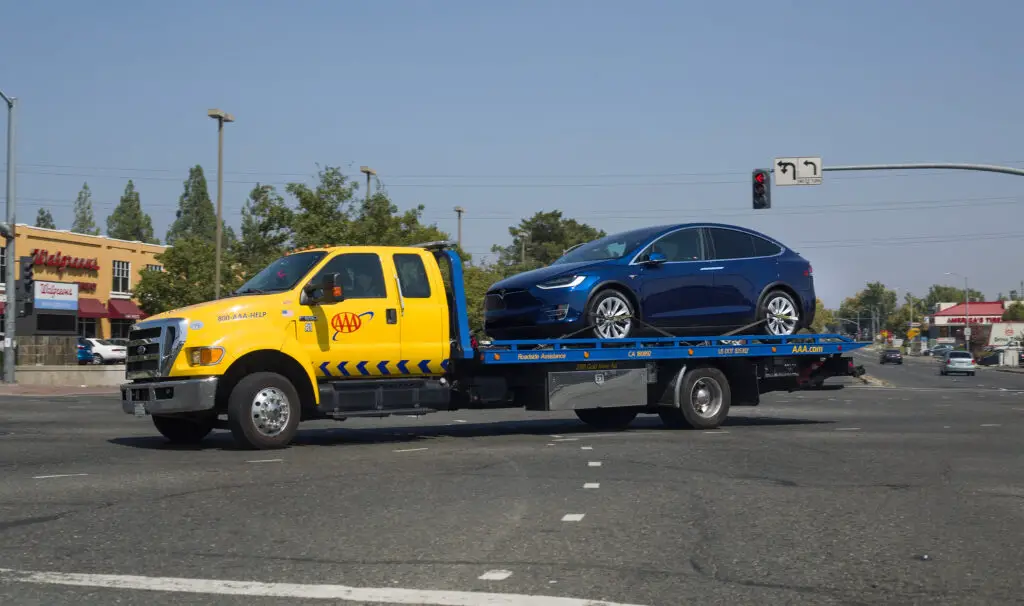
Rechargd.com is reader supported. We may collect a share of sales or other compensation from the links on this page. As an Amazon Associate, we earn from qualifying purchases.
We’re thinking about driving across the country with kids, plus the dog, and wondered if a Tesla would be up to such a long road trip?
Yes, Thanks to its innovative design, and styling, advanced Lithium-ion battery technology, and dedication to making the world’s most advanced electric vehicles. Tesla can travel unprecedented distances without needing to recharge, that said – don’t expect to achieve the same mileage you’d get from a traditional gas-guzzling ride.
Best-in Class Range
The current Tesla model line up of Model S, Model X SUV, and Model 3 achieve across their standard range, long-range, and performance models an average of over 300 miles on a single charge – equivalent to driving from Los Angeles to San Francisco or London to Glasgow.
But Consider Charging Time
While Tesla is dramatically more efficient than any other production EV on the market and is a great car to enjoy a long road trip, there are some drawbacks that you need to consider; particularly the amount of additional time your journey will take when compared to a petrol-driven car.
Depending on the circumstances, charging time can take anywhere between 30 – 45 minutes, which could increase your journey time by about one third – so it is something to consider before thinking about making your trip.
How does Tesla achieve such an impressive range?
With its philosophy of continuous improvement, Tesla is constantly refining and re-engineering its model lineup to add to the range, ride, and steering experience.
Recent improvements have included faster charging times, the introduction of new tire designs, an all-new Drivetrain design for the Model S, and Model X SUV, that helps increase the range substantially, a revised adaptive suspension system that presents an ‘ultra-cushioned feel’ when cruising at speed or using the Autopilot.
There have also been improvements to the leveling system to help maintain the optimized aerodynamic drag.
The Key Considerations
There are various things you need to consider when planning a long road trip, including the route, driving conditions, weather, and weight load amongst others.
1. Route Planning
When deciding on the itinerary for your trip, and planning the route, you need to decide, is your trip all about getting from A-B as quickly as possible, or is it about making the trip at a nice leisurely pace?
Once you’ve agreed on this, you then need to consider the driving environment along your chosen route, and how this might impact on your daily driving habits.
Before leaving for your road trip, perhaps map out the entire journey, using something like Google maps, this will give you an indication of your total drive time, but it doesn’t add any time for recharging – which is an important consideration, if your trip is time-sensitive, eating, comfort breaks, etc.

Tesla Go Anywhere tool
But if that’s not for you, and you’re all about throwing caution to the wind, you can dive in your Tesla, input your destination address into the Go Anywhere tool, and off you go.
The Tesla Go Anywhere system, removes any anxiety from your trip, as it will guide you to your destination while making use of Superchargers along the way.
Not only does it show you the nearest stand-alone Supercharger location, but it also tells you the total number of open stalls, status updates, and maximum charge rate available, plus it allows you to explore Destination Charging, which are chargers that are conveniently situated at hotels, restaurants, and shopping malls.
It also detects real-time traffic conditions and automatically adjusts the estimated driving, and arrival times so you don’t have to worry.
Before you set off
Before starting your trip, take a tour around your car to make sure everything is all okay, also be sure to check your tire pressure (psi) with the Tire and Loading Information label located on the center door pillar; low tire pressure can impact on the way the car handles.
Also inspect your tires for bulges, foreign objects, cuts or wear, if you notice anything, you can self-schedule a service appointment, using your Tesla app before you set off.
2. Tesla in Extreme Weather

Not only can extreme weather conditions impact your speed, and decrease your range, cold weather can also put additional demands on your battery; as cold batteries use more energy to maintain their optimal operating temperature.
You’ll also find that in severe cold-weather, cold battery packs, don’t charge as fast as warm battery packs, so you may have to allow for increased charging times.
If you’re stopping overnight, then you might want to consider charging your battery while it is still warm.
To help improve range in cold weather, Tesla recommends that you consider the following: maintain a regular, everyday charging routine using a low-voltage charger.
It’s best to only rely on high-voltage Supercharging when necessary. Whenever possible, don’t let the battery go above 90%, or below 20%.
Set your regenerative braking to “Standard” to maximize the energy you get back while decelerating, and, if possible, park your Tesla somewhere with warmer temperatures.
As a tip, keep your Tesla plugged in whenever possible as this will help the battery retain some heat – the onboard computer will automatically prevent over-charging.
Also, in the cold weather, try to limit the use of heat, and air conditioning – perhaps use the seat warmers instead to help keep the cabin warm.
3. Charging your Tesla
Even by using Tesla’s leading DC fast-charging capabilities; which can recharge a battery to half-full in less than 30 minutes, or 80% in about 45 minutes, your charging habits, including how often you charge, what voltage charger you use, and how long the car stays plugged in, can all have a direct impact on your range, and on the overall trip.
Because you want to spend more time enjoying your trip, and less time waiting, at the charging stations, you might want to think about stopping more often, and charging to just over 50 percent.
By stopping more often, and only filling up to around 60-70%, you’ll spend more time exploring, and less time charging the battery.
Quick tip – if your trip includes staying with friends or family, don’t forget to take your Tesla mobile connector, which plugs into any standard outlet, and gives you about 5 miles of range per hour charge.
4. Your Driving Style
During your trip, you’re going to face different driving challenges, and conditions to what you might come across, during your daily drive or commute.
For example, increased driving speeds, stop-go driving, uphill, and over rough terrain driving, along with inclement weather conditions, such as rain, snow, cross, and headwinds. All of these can take a toll on your battery and impact your overall range.
The Right Speed
Speed is one of the biggest items that can affect your range, simply put, the faster you go, the more aerodynamic resistance will come into play, so to improve your range, watch your driving speed, limit your top speed, and enable regenerative braking whenever possible.
Using the Autopilot
On a long, monotonous road trip, using the Tesla Autopilot system the way it was intended, would seem to make a lot of sense.
However, remember it’s not designed as a substitute for driving, or as an excuse for you to become a passenger; you still need to keep your eyes on the road, and your hands on the steering wheel.
But by using the cameras, and sensors, to keep the car in its lane, maintain a safe distance from other cars, and assist with lane changes, it will help to make you a less tired driver.
5. Take a rest
If you get tired, take a rest, and then carry on the next day.
The best way to monitor your personal range is with the Energy App, located on the Tesla touchscreen, it analyzes your driving patterns, and helps you maximize efficiency and range while you drive.
Taking your best friend with you
If you’re taking your best friend with you on a long road trip, the last thing you want them to be is uncomfortable, if you have to leave them in the car while you run a quick errand or take a comfort break.
With the Tesla Dog Mode, you don’t have to worry, as you can set it to maintain a selected cooling and heating temperature.
Plus Dog Mode also notifies passersby of the safety of your pet by displaying a large message on the center touchscreen – so you know they will always be safe.
6. Lighten the Load
To make your drive more efficient, and conserve range, remove all unnecessary cargo to help lighten your load; more weight requires more energy to move the vehicle.
Pack Light
Remove any roof racks or rear cycle racks when they are not in use. Reduce the aerodynamic drag by raising all the windows, and changing the air suspension (if equipped) to Low or Very Low when driving at speeds.
Use Aero Wheels
If you’re driving a Model 3 with aero wheels, then perhaps think about installing lightweight aero wheel covers, not only do these help reduce turbulence, and wind resistance, but they can also help to improve battery consumption and range by up to 3% at speed.
Space
Likewise, if you’re traveling with a group of friends, or you need to carry bulky items such as camping equipment, you might consider making your trip in the more spacious, and super comfortable Model X SUV as opposed to perhaps, adding additional weight, and reducing the range of the smaller Model S or Model 3.
The Conclusion
If planned properly a long road trip is a great way to get out, and explore the country. By taking a Tesla, on a long road trip not only are you a friend to the environment, but your journey is also efficient and you’re saving money while all the time arriving at your destination is relaxed.
That said be aware that the range will be less than a typical gas gar – any you can’t fill-up at any garage so route planning is essential so you don’t end up on the side of the road.
Enjoy your trip.
Tesla Road Trip FAQ
1. Can A Tesla Tow a Trailer
Yes, it can – but only if a tow hitch has been fitted – which is now an optional upgrade at time of purchase.
The Model X, 3 & Y are all rated for towing and have nearly as much capacity as that of a standard gas car at 5,000 lb.
Read more about how towing affects battery range over on my full piece: Can A Tesla Tow
2. Can Teslas Be Stolen?
We Teslas are much more secure than most cars – there are still cases of thieves gaining access and getting away. Read my full guide to see how to protect yourself and how Sentry Mode works over on: How Secure Are Teslas.
3. How Much Room is There For Luggage?
Teslas have a range of models, here they are ranked in terms of luggage space:
Internal space from highest to lowest:
- Model X
- Model Y
- Model 3
- Model S
The seats fold down in all models. Here’s my most recent guide to the interior space of the Model 3.
4. Can a Tesla Be Towed?

The short answer is yes, but there is a massive caveat to that. Teslas will overheat is towed for more than 35 miles (55km) because the wheels power energy back into the battery through regenerative braking.
So to avoid damage to your carload it onto a flatbed truck if you ever need roadside tow assistance.
Read more on my full Guide To Towing a Tesla
